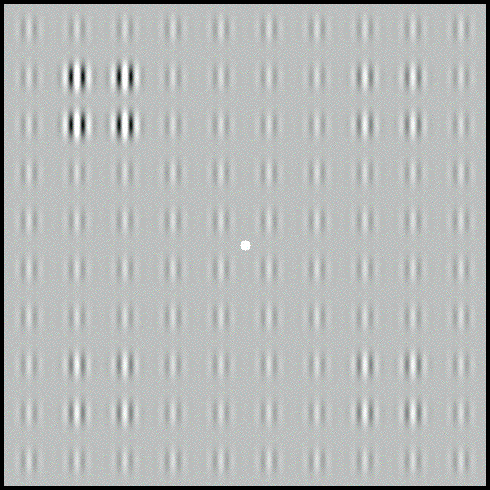Reversing a Performance Asymmetry through Practice
Zenger B. & Fahle M. (1997).
Investigative Ophthalmology
& Visual Science 38
, p. S963.
Purpose:
We studied practice effects in contrast-based
figure-ground segmentation.
Methods:
Stimuli were textures consisting of 10 x 10 vertical
Gabor patches (GP). In one quadrant, we presented a target texture
(2x2 GPs with contrast c_tg)
and in the three other quadrants distractor textures (2x2 GPs with contrast
c_dt). The remaining GPs had a contrast of c_bg. Stimuli were
presented for 83 msec and observers had to indicate the target quadrant
(4AFC). For different contrasts c_bg and fixed contrasts c1
and c2 (c1 < c2) we compared performance for c_dt = c1, c_tg = c2
(condition A) and c_dt = c2, c_tg = c1 (condition B).
Results:
For low c_bg it is easier to find the high contrast target
(condition A), whereas for high c_bg it is easier to find the low
contrast target (condition B). The asymmetry reverses at a c_bg
between c1 and c2 for naive observers, but the reversal point can
shift to higher contrasts (>
c2) after training. For c_bg-values
around c2, the performance asymmetry (between condition A and B) thus
changes its sign due to practice.
Conclusions:
Practice in
contrast-based figure-ground segmentation can lead to a highly
specific performance improvement.

back to my homepage
